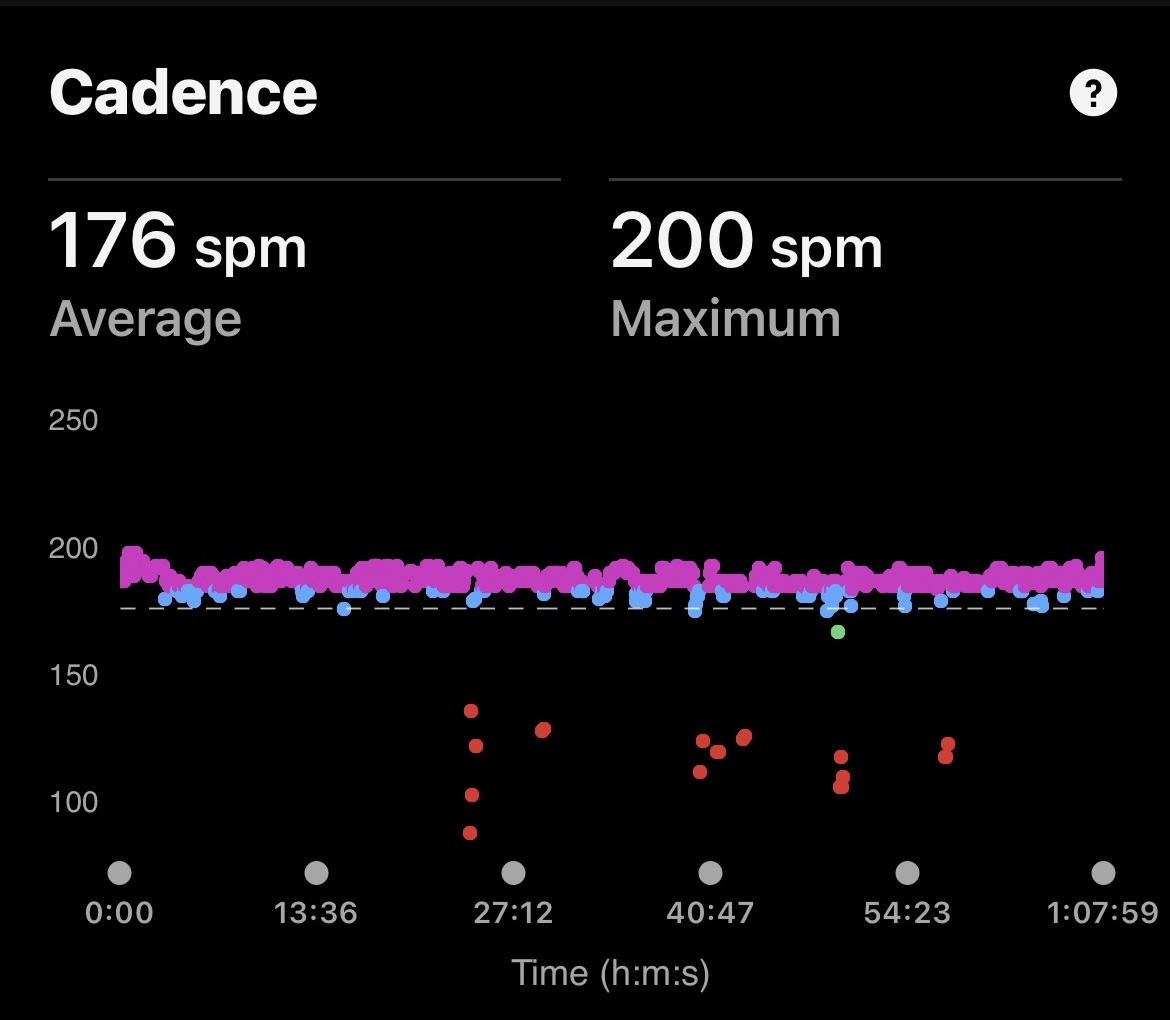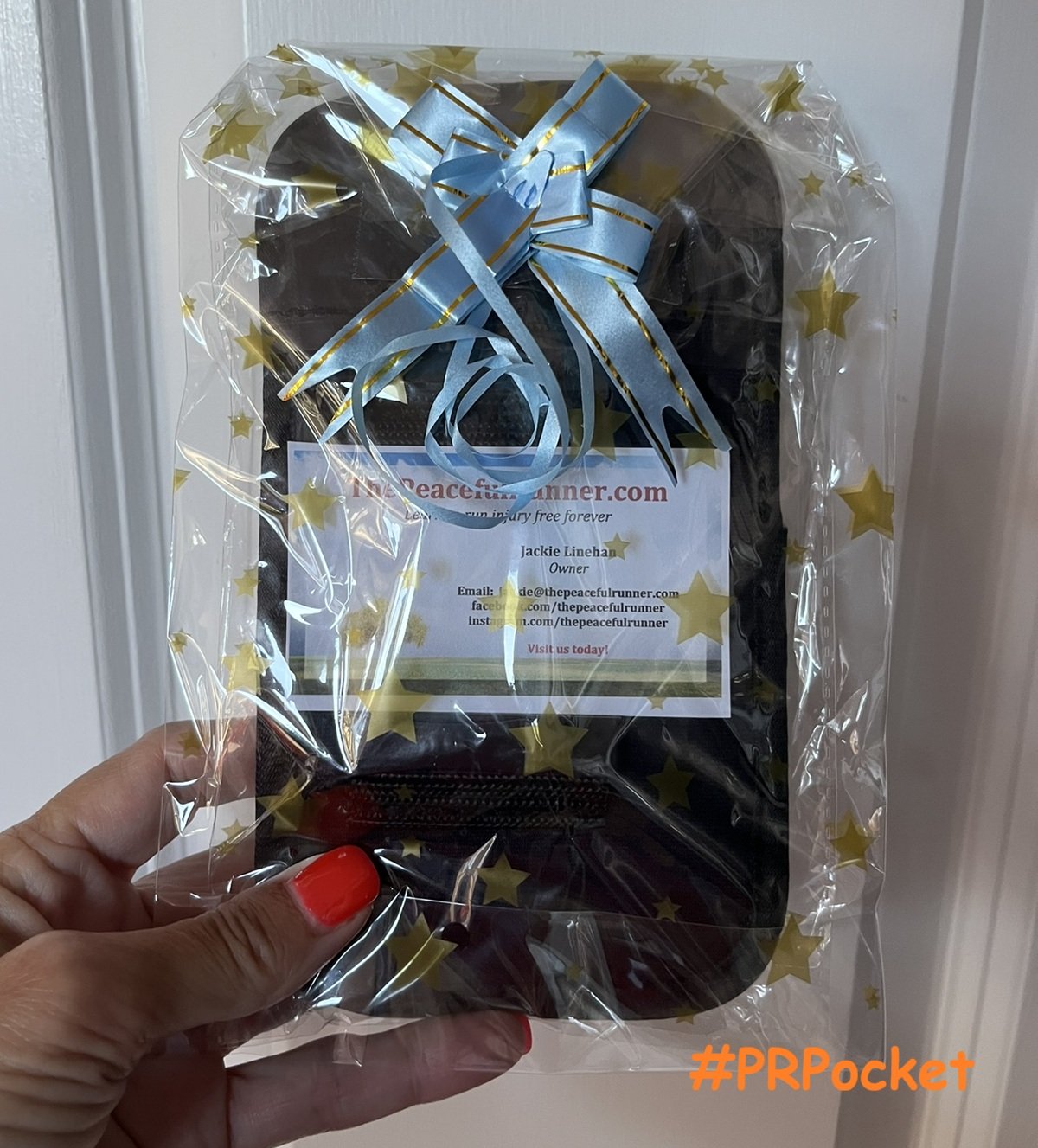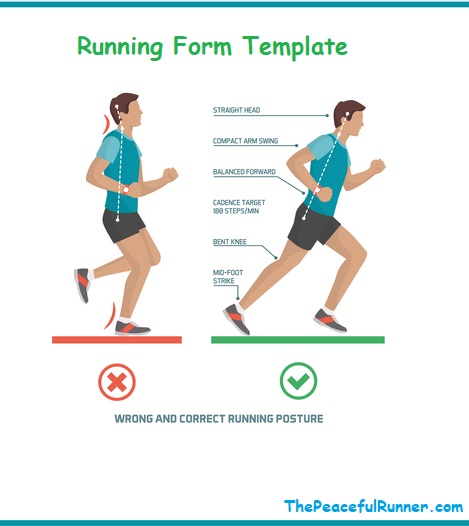- Home
- Running Form
- Improve Your Running Cadence
How to Improve Your Running Cadence: Tips and Drills
FTC Disclosure: As an Amazon Associate, I earn from qualifying purchases. Learn more
If you're
looking to run faster, reduce injury risk, and feel more efficient with every
stride, improve your running cadence! It is one of the most effective
changes you can make. Whether you're a beginner or a seasoned runner, adjusting
your cadence or stride frequency can help you achieve big gains in performance,
comfort, confidence, and even quiet that inner critic who says, “You’re not
built for this.”
What Is
Running Cadence?
Running
cadence refers to
the number of steps you take per minute (SPM) while running. Most recreational
runners have a cadence between 150 and 170 SPM. Elite runners typically have a
cadence around 170–180 steps per minute, but the ideal number varies by
person. The key isn’t to match a magic number—it’s to gradually improve your running cadence baseline to run more efficiently and reduce the pounding on your joints.
Why
Improve Your Running Cadence?
A study from the University of Wisconsin found that a shorter stride (by increasing running cadence or step rate) has less impact on the lower joints and therefore helps prevent injuries. Results of the study showed that runners bounced less and landed closer to their center of gravity. They also found that there was less stress on the knees and hips and less force of impact on landing.
A higher cadence generally means shorter, quicker steps, which reduces overstriding and the impact on your joints. It also improves running economy—helping you move with less effort as your feet make contact with the ground for a shorter period of time. If you’ve ever felt heavy or sluggish on a run, working on your cadence can help you feel lighter and more in control.
If your current cadence is, say, 155, you’re not doing anything wrong. But nudging that number upward—even by 5%—can lead to smoother strides, less fatigue, and a stronger sense of rhythm.
How to
Measure Your Current Cadence
Before you can improve your running cadence, you need to know your baseline starting point. Here’s how to easily determine your baseline:
- Count how many times your right foot hits the ground in 30 seconds.
- Multiply that number by 4 to get your total steps per minute.
Or, use a
GPS watch like Garmin or a running app like Strava, which track cadence
automatically.
Here's how the cadence data is displayed in the Garmin app:
Tips to
Improve Your Running Cadence
1. Increase Gradually
Don’t try to jump from 155 to 180 overnight. Aim to increase your cadence by 5% at a time. Sudden jumps can lead to overuse injuries or frustration. Make small adjustments over several runs until your body adapts.
2. Use a Metronome or Cadence Music
Try running to a metronome set to your target cadence or step count. You can find free metronome apps that can help you stay in rhythm. Matching your steps to a steady beat helps reinforce muscle memory and improves coordination.
Music can be a motivating tool in cadence enhancement. A playlist of songs designed specifically for running cadence with a set beats per minute (BPM) that matches your target cadence can create an enjoyable training atmosphere. Platforms like Spotify allow you to find playlists tailored to specific BPM, turning a monotonous run into a fun and rhythmic activity, while also enhancing your running cadence.
3. Focus on Short, Light Steps
Pay attention to your form while practicing these techniques. Instead of
forcing speed, think light and quick. Imagine you’re running barefoot on
hot sand or trying not to make a sound. This cue encourages shorter strides and
faster turnover.
Drills to
Improve Running Cadence
Adding cadence drills to your weekly routine can help retrain your muscles and nervous system for a quicker step rate.
Here are a few you can practice:
✅ Stride Drills
Stride drills are short, fast drills ran for a short set distance or set period of time, followed by a recovery period and then repeated several times. The goal is to gradually increase the number of steps you take per minute.
Try this drill set: Do a short 10-15 minute warm-up and without changing your pace, run for 30 seconds and count the strides of one leg. Rest for a minute or two and run for 30 seconds again, but this time try to slightly increase the number of leg turnovers. Repeat about 5 times. Rest and recover after each run interval.
Or add this one at the end
of an easy run: Do 4–6 strides (short bursts of 20–30 seconds where you
gradually accelerate). Focus on quick turnover and good form, not all-out
speed.
✅ High-Knee Drill
Incorporate high knees for 20–30 seconds during your warm-up. This helps improve leg speed and builds cadence awareness.
✅ Short Hill Sprints
Find a gentle hill and run up for 10–15 seconds at a fast, controlled pace. This naturally encourages quicker steps and builds strength.
Final
Thoughts
Improving your running cadence isn’t about becoming someone you’re not—it’s about unlocking the runner you already are. With a little focus and a few simple drills, you’ll move more efficiently, feel more confident, and start running with more rhythm and less strain.
And the best part? Each light, quick step you take is one more way to quiet the inner critic, transform your running experience, and cheer on the stronger, faster runner you’re becoming.
Have you ever tracked your cadence before? Let us know in the comments below...
Back to the top of Improve Your Running Cadence
Return to Running Form
- Home
- Running Form
- Improve Your Running Cadence
FTC Disclosure: As an Amazon Associate, I earn from qualifying purchases. Learn more
NEW FEATURE - DISQUS COMMENTS!
Login using Facebook, Twitter, Google or Disqus.
Recent Articles
-
How to Choose the Best Treadmill for Your Home
Dec 10, 25 07:13 AM
-
Winter Running Tips and the Best Waterproof Running Shoes
Nov 15, 25 01:55 PM
-
When the Music Stops, Awareness Begins
Nov 05, 25 10:54 AM
-
Get yours in time for gift giving!
Oct 24, 25 12:32 PM
-
Change How You Deal with Running Pain
Oct 10, 25 08:53 AM
-
Surprising Benefits of Backwards Running
Sep 15, 25 12:40 PM
-
It's an Awesome Product!
Aug 28, 25 09:25 AM
I went out for a walk this morning and I used the #PRPocket for the first time. I had to check at least 3 times because I thought I lost my phone (iPhone -
Running in Hot Weather: What Every Runner Needs to Know!
Aug 14, 25 01:00 PM
-
Sick of Dieting? You’re Not Alone — And There Is a Better Way.
Jul 30, 25 12:18 PM
-
Tips and Drills to Improve Your Running Cadence
Jul 25, 25 12:52 PM




























